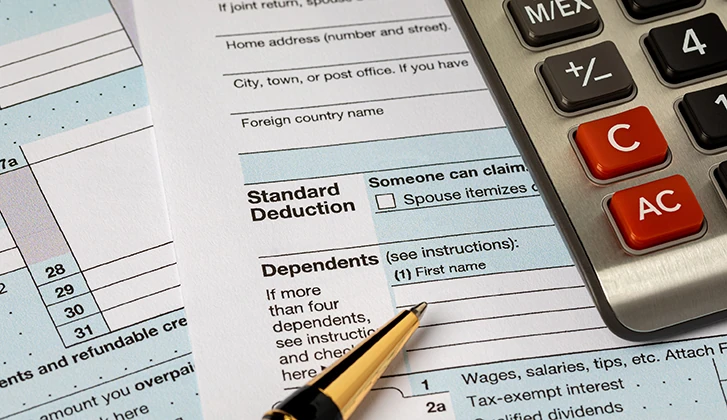NOTICE: Internet Explorer was retired by Microsoft on June 15th, 2022 and is no longer supported. This could change how you access Online Banking.
How to Increase Your Gas Mileage

Welcome to WesBanco Wellness; a Series for Your Financial Health. Here we will tackle budgeting, debts, safe web practices and more to help get you into the best financial shape of your life.
No amount of wishful thinking will lower prices at the pump. Instead, focus on efforts that will make a difference—follow these 8 tips to increase your gas mileage and get the most out of every gallon.
1. Drop the cargo weight. Cleaning your car out isn’t just good advice from your mom—it can actually save you money on gas. As little as 100 extra pounds rattling around in your trunk can impact your fuel efficiency, according to General Motors. Keep the roadside emergency kit and spare tire, of course, but unload golf clubs, forgotten baggage, and other gear you don’t immediately need.
2. Use rear-mounted accessories. Hauling bulky items reduces your gas mileage, no question. When it can’t be avoided, minimize the impact with rear-mounted cargo boxes. These reduce your fuel economy by 1-5% at highway speeds, but that’s a huge improvement to the whopping 6-17% reduction from top-mounted roof racks and cargo boxes.
3. Don’t idle. Idling is bad for the environment and for your wallet, using a quarter to half gallon of fuel per hour (or about 1-2 cents per minute), according to fueleconomy.gov. Idling consumes more fuel than restarting your car, plus your car gives off 80% more pollution when idle. Any time you’re at a full stop and it’s safe to do so, turn off your engine to save money on gas.
4. Keep your speed in check. The most fuel efficient highway speed is around 50 mph, and your efficiency declines as your speed increases. To maximize every gallon, use cruise control when you can—hitting the brakes and gas pedal hard quickly eats up fuel. According to AAA, reducing your highway speed by 5 to 10 mph can boost your fuel economy by 7-14%.
5. Check your tires. Underinflated tires can increase fuel consumption by as much as 3%. That may not sound like a lot, but like price increases at the pump, it adds up fast! Make sure you’re driving with properly aligned tires at the correct PSI. Bonus: your tires will wear down less quickly, saving you additional dollars.
6. Stay on top of maintenance. Sometimes you have to spend money to save money. Make sure your car is regularly maintained. The National Institute for Automotive Service Excellence reports that bad spark plugs, for instance, can decrease fuel economy by as much as 30%. Properly maintained, even older vehicles keep their fuel efficiency for years.
7. Plan your route. Make a tank of gas last longer when you group errands based on their location. Plan ahead and bundle activities like shopping and banking for fewer trips overall. Set location-based reminders on your phone to avoid back-and-forth excursions to the same area.
8. Check maps for delays. As a best practice, pull up Google Maps before you leave and make sure there aren’t any traffic delays that will leave you idling or stopping and starting in traffic for hours.
You don’t have to stop driving altogether or revamp all your automotive habits to spend less money on fuel. Try a few adjustments from the list above to increase your gas mileage and have a positive impact on your bottom line.
Content is for informational purposes only and is not intended to provide legal or financial advice. The views and opinions expressed do not necessarily represent the views and opinions of WesBanco.
While we hope you find this content useful, it is only intended to serve as a starting point. Your next step is to speak with a qualified, licensed professional who can provide advice tailored to your individual circumstances. Nothing in this article, nor in any associated resources, should be construed as financial or legal advice. Furthermore, while we have made good faith efforts to ensure that the information presented was correct as of the date the content was prepared, we are unable to guarantee that it remains accurate today.
Neither Banzai nor its sponsoring partners make any warranties or representations as to the accuracy, applicability, completeness, or suitability for any particular purpose of the information contained herein. Banzai and its sponsoring partners expressly disclaim any liability arising from the use or misuse of these materials and, by visiting this site, you agree to release Banzai and its sponsoring partners from any such liability. Do not rely upon the information provided in this content when making decisions regarding financial or legal matters without first consulting with a qualified, licensed professional.
Oversight and Accountability
Our Board of Directors and Executive Team are actively engaged in our sustainability strategy. Our Sustainability Committee, a group of cross-functional senior leaders, leads our program and provides regular updates to the Board. As our strategy develops, we are committed to providing additional reporting and transparency on this webpage and other key documents, as appropriate.




